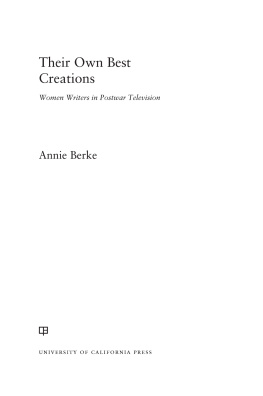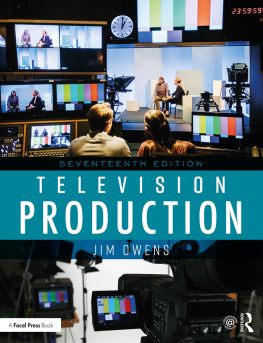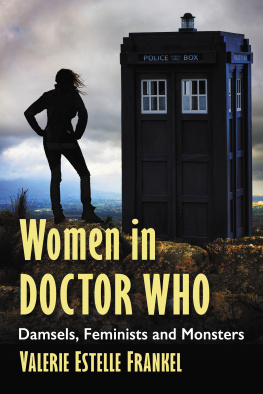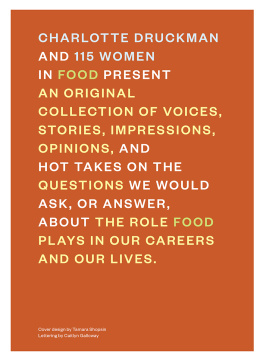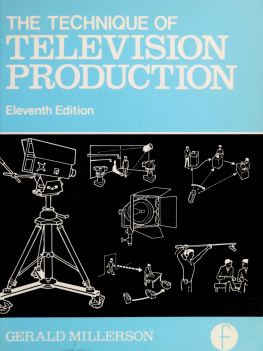1994 The University of North Carolina Press
All rights reserved
Manufactured in the United States of America
Library of Congress Cataloging-in-Publication Data
DAcci, Julie
Defining Women: television and the case of Cagney and
Lacey / Julie DAcci.
p. cm.
Includes bibliographical references and index.
ISBN 0-8078-2132-2 (cloth : alk. paper).
ISBN 0-8078-4441-1 (pbk. : alk. paper)
1. Cagney and Lacey (Television program). 2. Television and womenUnited States. 3. Women in televisionUnited States. I. Title.
PN1992.77.C24D33 1994
791.4572dc20 93-32536
CIP
The paper in this book meets the guidelines for permanence and durability of the Committee on Production Guidelines for Book Longevity of the Council on Library Resources.
99 98 97 96 95 6 5 4 3 2
Julie DAcci is assistant professor of communication arts at the
University of Wisconsin-Madison.
THIS BOOK WAS DIGITALLY MANUFACTURED.
ILLUSTRATIONS
Cagney and Lacey cocreators Barbara Avedon and Barbara Corday,
Tyne Daly and Loretta Swit as Mary Beth Lacey and Christine Cagney,
TV Guide advertisement for the Cagney and Lacey made-for-TV movie,
Loretta Swit and Tyne Daly as the original Cagney and Lacey,
Meg Foster in the original opening credits for the TV series,
The second Cagney and Lacey team discusses a case,
Meg Foster and Tyne Daly in the original opening credits,
Tyne Daly and Sharon Gless in the opening credits for the revised series,
Sharon Gless as the new Cagney,
Barney Rosenzweig and the cast of the Gless/Daly series,
National Examiner cover with photo of Tyne Daly and Sharon Gless,
People cover story on the breast cancer episodes,
Cover of 1985 Dell paperback by Serita Deborah Stevens,
Ms. magazines 1987 Women of the Year,
TV Guide advertisement for A Cry for Help,
Ethel Williams, Sharon Gless, Tyne Daly, and Judy Goldsmith,
Cagney and Lacey discuss a case,
Cagney and Lacey as mature call girls,
The darlings of the womens movement,
What do you know about it anyway, Sergeant?
Conference in the Jane,
Scene from Power,
Two shots from Who Said Its Fair?
ACKNOWLEDGMENTS
I owe thanks to many people for their help, collegiality, and friendship during the research and writing of this book. My father, Anthony DAcci, supported the project in countless ways. I am very grateful, and very sorry he never got to see its publication. Barney Rosenzweig, executive producer of Cagney and Lacey, generously granted me interviews and access to the programs set, production files, and production and staff meetings. Such cooperation is crucial to the study of television, and I applaud his openness to scholarly investigation. I also want to thank Barbara Corday, Barbara Avedon, P. K. (Patricia) Knelman, Terry Louise Fisher, Peter Lefcourt, Tyne Daly, Sharon Gless, Ralph Singleton, Stewart Lyons, Maury Harris, Ben Sobin, Eloise Robinson, Jo Corday, and the rest of the cast, crew, and staff of Cagney and Lacey for giving me interviews, information, and the opportunity to observe them at work. I offer special thanks to Barbara Corday and Barbara Avedon for granting me permission to include a script at the end of the book, and to the writers Chris Abbott and Terry Louise Fisher. I also thank Crystal Huston, Leslie Werner, and Diane Nassau at Orion Pictures and Azita Gorton at CBS for their help.
Barbara Hanrahan, David Perry, and Rich Hendel at the University of North Carolina Press have my great appreciation, and Pamela Upton my utmost gratitude for her expert copyediting and patience. Thanks also to Laura Moss Gottlieb for her skills as an indexer.
I am grateful to many friends and colleagues for sending me articles and press clippings, videotaping programs, granting me interviews, discussing the project, offering suggestions, and inviting me to present and publish papers. They include Helen Baehr, Cathy Shaker Breit, Robert Breit, Juliet Brodie, Maxine Fleckner Ducey, Gillian Dyer, Elizabeth Ellsworth, Lisa Freeman, Todd Gitlin, Timothy Haight, Teri Hall, Debbie Hanson, Henry Jenkins, Kathleen Levenick, Denise Mann, Elaine Marks, Biddy Martin, Tamar Mayer, Patricia Mellencamp, Carol Miller, Laura Stempel Mumford, Mary Beth Rhiel, Susan Searing, Lynn Spigel, Gabriele Strauch, Kristin Thompson, Sasha Torres, Mariamne Whatley, Kathleen Woodward, and Nancy Worcester.
At many different stages, the manuscript profited from readers who provided incisive and thoughtful comments. They will no doubt recognize their contributions in the following pages and have my deepest thanks. Jane Feuer, Vance Kepley, Janet Staiger, Thomas Streeter, and David Thorburn all gave astute critiques and advice. John Fiske and Elaine Marks read with care, made many key suggestions, and offered an abundance of encouragement. Robert Allens close attention to various drafts and his countless recommendations were utterly invaluable. His thoroughness and skill as a reviewer were nothing short of awe inspiring. My gratitude to David Bordwell is great indeed. He was an indefatigable reader and critic whose acuity and efforts helped shape the manuscript from its earliest conception. His boundless energy not only benefited the text but was a continual source of inspiration for its author.
Friends and associates have supported my work in more ways than they could ever know. I especially want to thank my colleagues in the television and film programs at the University of WisconsinMadisonJohn Fiske, Michele Hilmes, Tino Balio, David Bordwell, Donald Crafton, Lea Jacobs, Vance Kepley, and J. J. Murphy; Joanne Cantor and Mary Anne Fitzpatrick; the members of the womens studies program at the University of WisconsinMadison; the Console-ing Passions: Television, Video, and Feminism group; coeditors from Camera Obscura; former colleagues from the communications and womens studies programs at Loyola University of Chicago; and the graduate students in my seminars at the University of Wisconsin-Madison.
Three friends and colleagues warrant special mention. They have performed emergency readings, instant analyses, and editing feats; have given me their time, intelligence, and insights on more occasions than I could ever recount; and have kept me buoyed up with their remarkable wits. I am deeply grateful to Biddy Martin, Lynn Spigel, and Charlotte Brunsdon.
Finally, I owe immeasurable gratitude to Fran Breit, who has lived with this project for many years with complete equanimity and generosity. She has engaged in countless on-the-spot discussions, has listened patiently, has taught me about computers, and has given me boundless encouragement and aid. Her unstoppable and unparalleled humor has seen me through the ups and downs of such a long-term undertaking. There is really no way I can adequately thank her, but I dedicate this book to her with wholehearted appreciation.
DEFINING WOMEN



